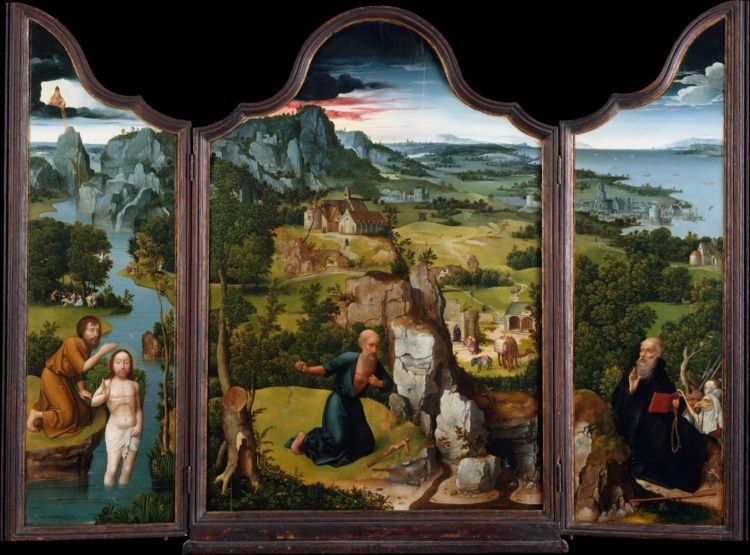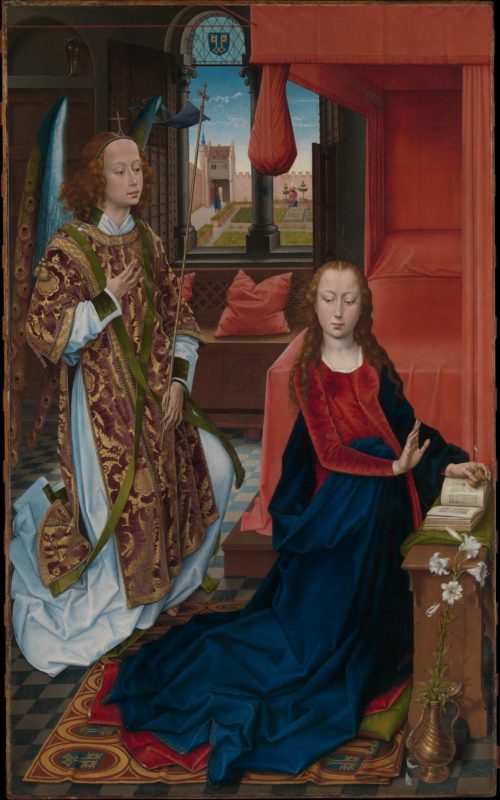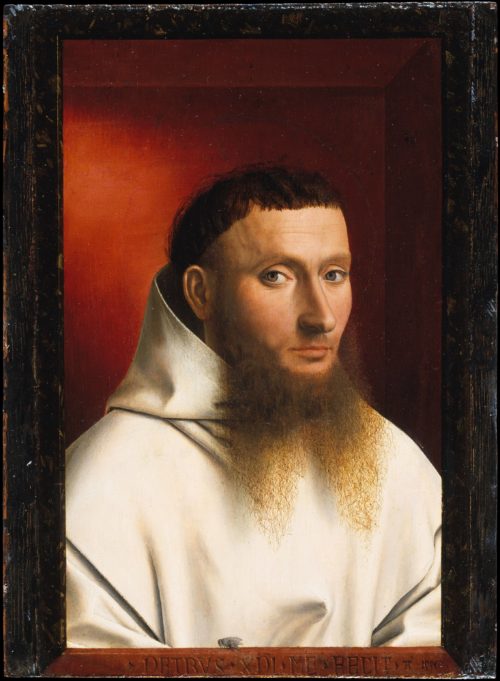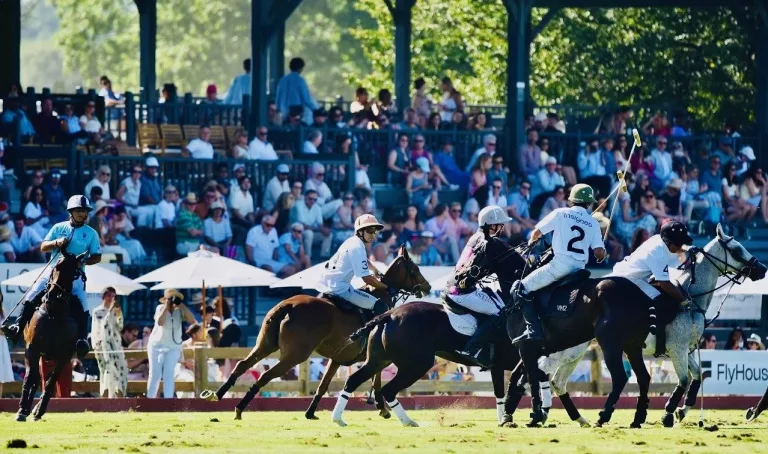
By Anne W. Semmes
So, I had asked Maryan, who has retired from 43 years at the Metropolitan Museum of Art, as Curator Emerita of European Paintings, “If you could have six paintings to live with in your house, what would they be?” “I think I would need a bigger house,” she smiled. Must she have only six, she asked? “That’s very hard.” But she pondered then chose six she would be “thrilled to live with,” giving a thoughtful line on each.
The first choice is surely familiar to many, Netherlandish painter Peter Bruegel the Elder’s “The Harvesters,” 16th c. “It’s among the earliest paintings where a naturalistically portrayed landscape becomes the featured subject and humans play a subsidiary role,” she said.
Next came Netherlandish painter Dieric Bouts’s “Virgin and Child,” 15th c. “So very poignant and natural in their embrace,” she noted. “These figures appear to represent any mother and her child but are intended to portray the Virgin and Christ Child.”
Next was Petrus Christus’s also Netherlandish 15th c. painting of a “Portrait of a Carthusian.” “The hypnotic character of the man’s gaze as he directly addresses the viewer,” she finds “riveting, but his enigmatic expression reveals nothing about his innermost thoughts.”
“The Penitence of Saint Jerome” a triptych by Joachim Patinir, a 16th c. Netherlandish artist, was Maryan’s fourth and timely choice. “Here man and nature share the stage in a perfect world of seemingly unchanging weather conditions. Although unrealistic, it seems so appealing given our environmentally threatened world of today.”
Her fifth choice was “The Annunciation” by Hans Memling, also a 15 c. Netherlandish painter. Her take? “Pure regal majesty in every formal sense, especially in the exquisite painting technique employed to represent the sumptuous materials and objects in the Virgin’s bed chamber.”
The sixth choice was no surprise – 15th c. Jan van Eyck’s “The Crucifixion and The Last Judgment.” Maryan is a noted scholar of Jan van Eyck as described in last week’s Part I story. Citing Jan van Eyck as the so-called “Founder of Early Netherlandish Painting,” she said, “This work never ceases to amaze me in all of its details, which collectively support the devotion to the ‘Miraculous Bleeding Host’ so popular in Brussels in the 1430s.”
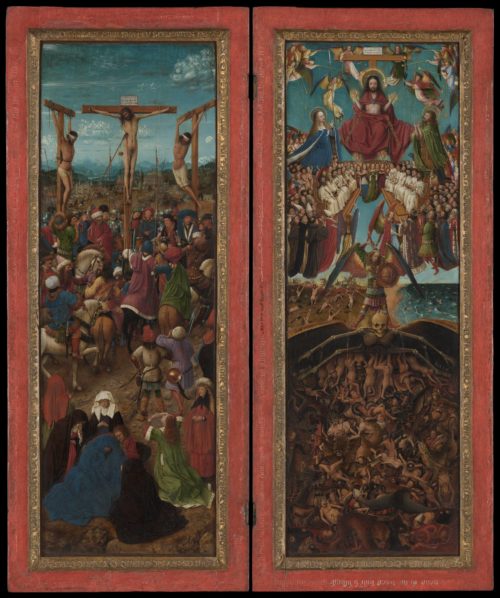
So, as the majority of these six have a religious subject – as with so many of the Netherlandish period paintings, my question was whether these religious paintings had impacted her faith?
“Well, I consider myself a woman of faith,” she replied, “But, what’s interesting about how I approach these paintings is also my understanding of what they meant in their own time.
And one of the most popular religious themes in the late 15th, early 16th century, especially in Antwerp, was the Adoration of the Magi…probably more paintings of that subject made by Antwerp artists in the early 16th century than anything.”
“It’s a wonderful story of these three kings following a star from the East,” she continued, “and finding the newborn Christ child, and worshiping that Christ child. But it’s more fiction than fact. But why was it so important in Antwerp at the time?” Maryan learned from a colleague looking into the archives in Antwerp, that “ship owners, and people who were in the navigation occupation…traders, many of them named their children after the three kings.”
“And it suddenly meant so much more to me,” she said, “because Antwerp, at that moment, had taken over from Bruges as the economic hub of Western Europe. It was the most important trading center in Europe. And that meant that ships were coming and going, goods were being transferred, precious objects were being brought. And so, in a certain way, the story of the three kings coming from exotic foreign places, bringing amazing gifts to the Christ child, was kind of merged with their professional world. So, they, in a certain way, practiced their faith with their profession.”
But for us today perhaps she thought “a really important image for us and our faith might be about the environment, how we save the environment, or what that means to us as wanting to preserve the beauty of nature and the creation…Different times, different interpretations.”
In Maryan’s book-lined study she showed her large book on “Jan van Eyck’s Crucifixion and Last Judgement Solving a Conundrum” that she described as “a real detective study done with conservators at the Met.” But it was another large book she was most proud to share with its title of “Tributes To Maryan W. Ainsworth – Collaborative Spirit: Essays on Northern European Art, 1350-1650.”
“I was completely overwhelmed and flabbergasted,” she told, “that my students that I trained at the Met (25 or 30 of them), young curators, and Slifka Fellows, got together and created a book of tributes by the students and colleagues of mine in this field who all wrote individual articles and essays about subjects that relate to my career, or what I’ve done, or paintings I’ve worked on. It’s a very beautiful book.” [Found at www.brepols.net/products/IS-9781912554751-1]
But with its presentation coming during COVID time, she had to settle for a Zoom event with the editors “that was lovely.” That “Tributes” book is known in Germany as a Festschrift, she told. “It’s often done when a professor at a university turns 65. And that’s usually retirement age.” But from the sound of Maryan’s ongoing assignments with the Met and elsewhere she has yet to reach that retiring age.
